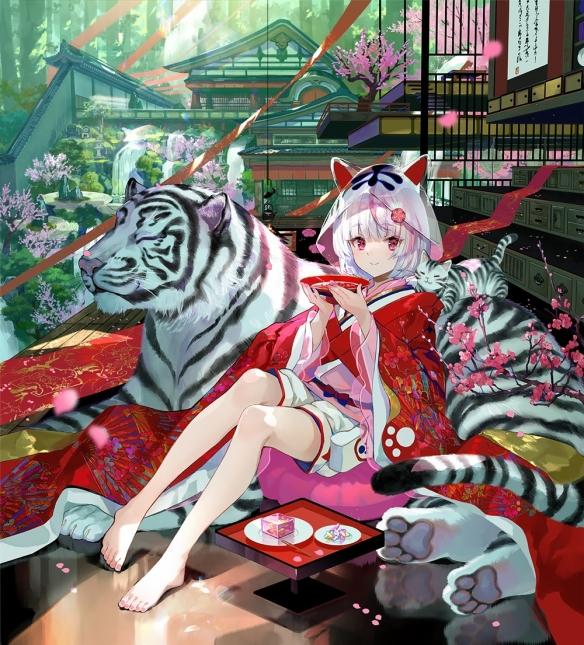每年11月第四个星期四是感恩节,这是美国人民独创的一个节日,也是美国人合家欢聚的节日在感恩节的餐桌上,火鸡是必不可少的,这是为什么呢?感恩节吃火鸡有什么特别含义吗?,我来为大家科普一下关于感恩节为什么要吃火鸡?下面希望有你要的答案,我们一起来看看吧!

感恩节为什么要吃火鸡
每年11月第四个星期四是感恩节,这是美国人民独创的一个节日,也是美国人合家欢聚的节日。在感恩节的餐桌上,火鸡是必不可少的,这是为什么呢?感恩节吃火鸡有什么特别含义吗?
For a lot of Americans, the best thing about Thanksgiving is the food.
对很多美国人来说,感恩节最赞的部分莫过于美食。
And no Thanksgiving meal is complete without —that's right— turkey!
而感恩节大餐有一样东西必不可少,对,那就是火鸡!
But why turkey, exactly?
但为什么唯独不能缺了火鸡呢?
How did this strange bird come to dominate the dinner table?
这种怪怪的飞禽是如何成为餐桌主角的呢?
Well, turkeys have a lot going for them.
火鸡有很多特点。
For one thing, they're big— big enough to feed a family.
一方面,它们分量足,足以喂饱一家人。
For another, they're not usually raised for their eggs like chickens are.
另一方面,通常人们不会为了获取它们的蛋而像养鸡那样去饲养火鸡。
In the old days, that meant that turkeys were more ...expendable.
在过去,这意味着火鸡更……实惠。
Which in turn made turkey meat relatively cheap.
因此,火鸡肉相对便宜。
The fact that wild turkeys are native to North America made them a natural choice to be served at early Thanksgiving celebrations.
野生火鸡原产于北美洲,因此自然而然被用于早期的感恩节庆祝活动。
But that doesn't mean they were always the most important part of the feast.
但这并不意味着它们一直是节日大餐的主角。
In fact, the event we now think of as the "First Thanksgiving" may not have had any turkey at all.
其实,现在公认的首次感恩节庆典中,可能根本没有火鸡。
It's true that the Pilgrims shared a meal with the Wampanoag Indians at Plymouth colony in 1621.
1621年,普利茅斯殖民地的移民确实和当地的万帕诺亚格印第安人一起享用了一顿大餐。
But all we know for sure about the menu is that it included "deer and fowl." That fowl might have been turkey, but more likely it was ducks or geese.
但我们只能确定当时的菜单中有“鹿和禽类”。这里的禽类可能指的是火鸡,但鸭子和鹅的可能性更大。
What's more, that 1621 meal didn't exactly start a trend.
更重要的是,1621年的那顿宴席并没有成为一种惯例流传下去。
Throughout America's early history, some communities did hold ceremonies to give thanks for the fall harvest.
纵观美国早期历史,一些居民区确实举行过感恩秋季丰收的活动。
And over time, the common turkey did become a popular centerpiece for these occasions.
随着时间的推移,普通火鸡也确实成为了这种场合很受欢迎的主角。
But the so-called "First Thanksgiving" was largely forgotten about until the 19th century when various local traditions inspired the idea of a national celebration.
但直到19世纪,当各种地方传统激发起全国统一庆祝的想法之后,所谓的“首个感恩节”才又被人们提起。
For more than 30 years, a writer named Sarah Josepha Hale advocated for Thanksgiving to become an official U.S. holiday. Her efforts finally succeeded in 1863 when Abraham Lincoln issued a presidential proclamation.
一位叫萨拉·约瑟法·黑尔的作家在30多年里,一直主张把感恩节定为美国的正式节日。1863年,亚柏林罕·林肯发表一次总统宣言时,她的努力终于成为现实。
Only then did people begin to think of Thanksgiving as a uniquely American observance.
直到那时,人们才开始把感恩节视为美国独有的庆典。
The story of the Pilgrims became closely connected to the holiday, as did ...well, the turkey!
从此,早期移民的故事与感恩节密不可分,火鸡……也一样! ~xyq~
Even if they weren't served at the first Thanksgiving, turkeys were mentioned in Pilgrims' journals.
即使火鸡并没有出现在第一次感恩节上,但移民在日记中还是提到过它们。 ~eudic
And at least one Founding Father was fond of them.
而且至少有一位国父很喜欢火鸡。
Benjamin Franklin touted the turkey as a "respectable bird,"
本杰明·富兰克林追捧火鸡为“值得尊敬的鸟”,
and a "true original native of America." By the end of the 19th century,
并且是“真正的美洲原住民”。19世纪末,
people across the country were calling the holiday "Turkey Day." Symbolism aside, it was practicality that ensured the turkey a permanent place on the Thanksgiving table.
全国各地都称这个节日为“火鸡节”。抛开象征意义不谈,这种说法确实保证了火鸡在感恩节餐桌上的永恒地位。
Through the years, they've remained affordable— they're big enough to feed a family with plenty of leftovers.
多年来,它们一直都很便宜实惠——分量大到全家人都吃不完。
,




